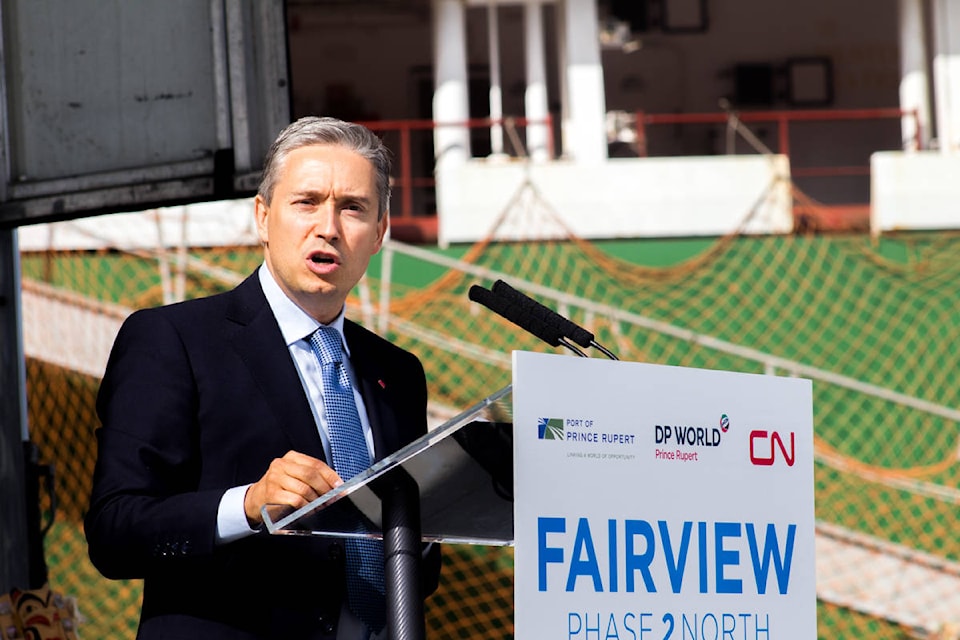Canada has agreed to a revised trade agreement with the Trans-Pacific Partnership, a deal that spells out growth for trade industries and the Port of Prince Rupert.
“This is very positive news for Prince Rupert as a gateway,” said Ken Veldman, director of public affair for the Port of Prince Rupert, who is also board director of the BC Chamber of Commerce.
International Trade Minister Francois-Philippe Champagne confirmed the successful conclusion to the new Comprehensive and Progressive Agreement for the Trans-Pacific Partnership (CPTPP) on Tuesday, Jan. 23, after two days of talks in Tokyo, Japan. The agreement is expected to be signed by March.
The agreement will eliminate tariff and non-tariff barriers to trade among 11 members of the CPTPP, including Canada, Australia, New Zealand, Japan, Malaysia, Vietnam, Brunei, Chile, Mexico, Peru and Singapore. The U.S. withdrew from the partnership in Jan. 2017.
In time, the Port of Prince Rupert expects the deal will increase trade volumes that run through the gateway with both imports and exports.
“Let’s take a market like Japan, where we’re looking at significant possibilities in terms of improving exports in food products, wood products, where currently there are some significant tariffs,” Veldman said.
Vietnam and Malaysia also have high tariff barriers for Canadian trade to move into the market, he said. With the agreement, there is now the possibility of expanding into those markets.
This trade deal will open Canada to the third-largest economy in the world, Japan.
READ MORE: Canada, TPP agrees to revised deal without the United States
“There is also the import element. When you look at where import gains could be had, you start to look at things like automotive parts, for example, from Japan. A big portion of what is imported right now through containers into Prince Rupert are things like automotive products, this obviously lends back to where we have a real comparative advantage,” Veldman said.
The deal could mean increasing exports in food products, such as seafood, and wood products, which both have significant tariffs in Japan and Vietnam.
“In the forest industry, like Vietnam, a very important market for wood and paper, [there are] very high tariffs. Same with Malaysia. Even in Japan, a long standing market, still a 10 per cent tariff in Japan for wood products from there to Canada.
READ MORE: 5,400 new jobs expected through Port of Prince Rupert
“This is a really good news announcement and there’s some real potential to grow here,” he said. “It’s not that it’s going to happen overnight, but this is a good structural foundation increasing Asia-Pacific trade between North America and those countries.”
The government of Canada expects the trans-pacific agreement to boost the GDP by $4.2 billion by adding preferential access to 10 countries that represent 495 million people.
shannon.lough@thenorthernview.com
Like us on Facebook and follow us on Twitter
